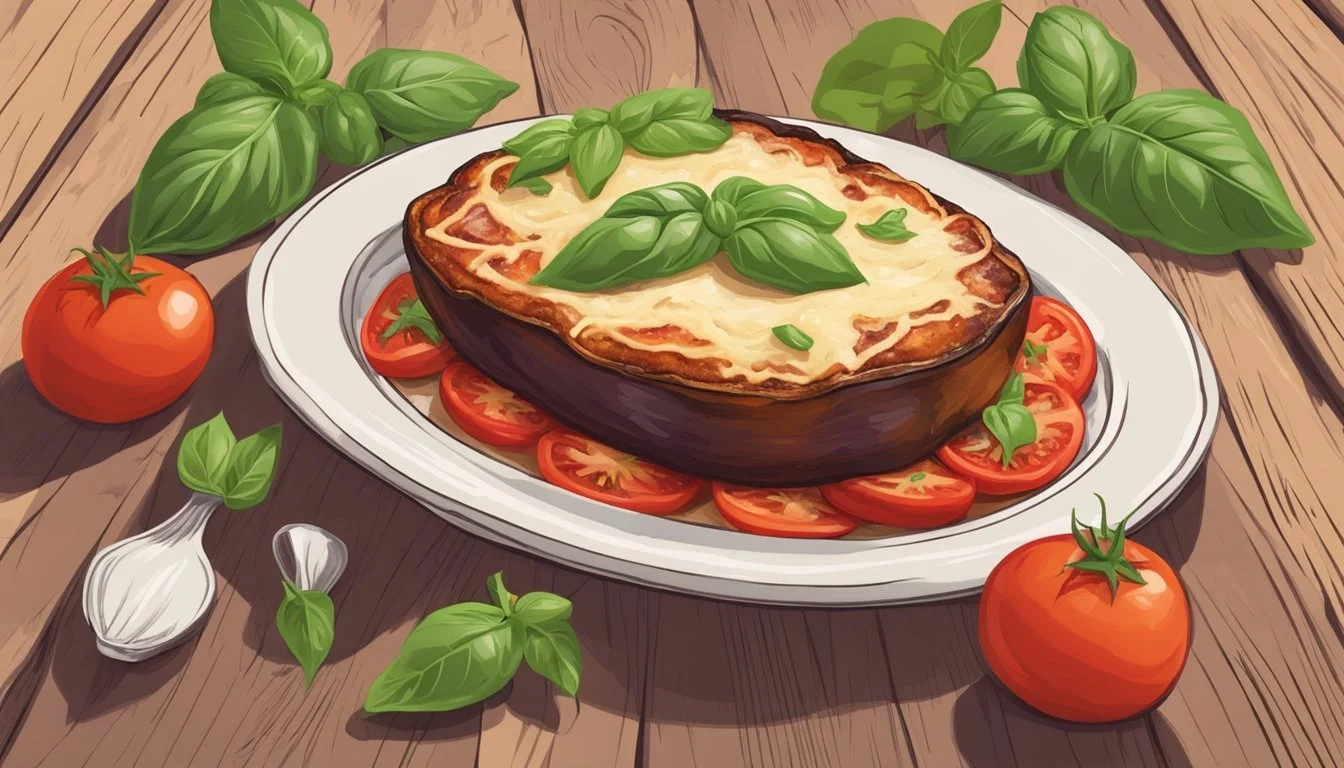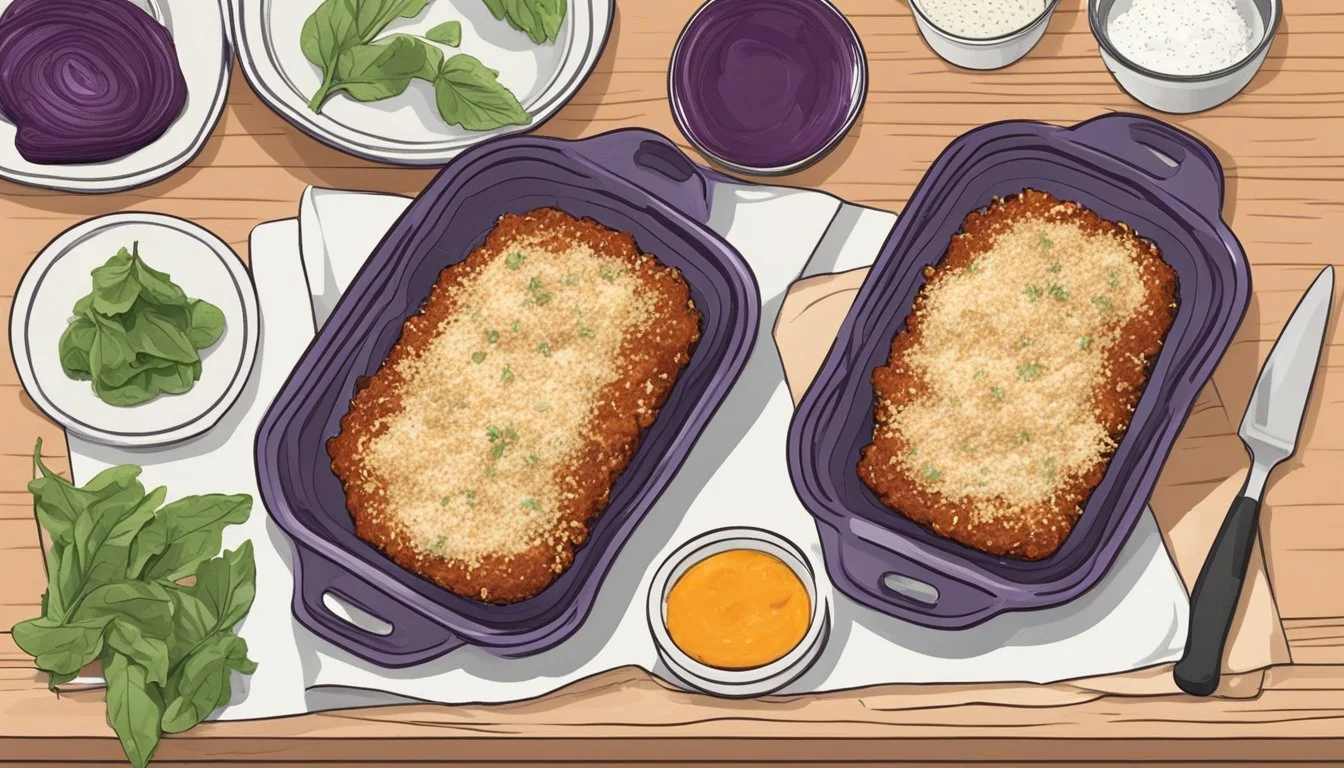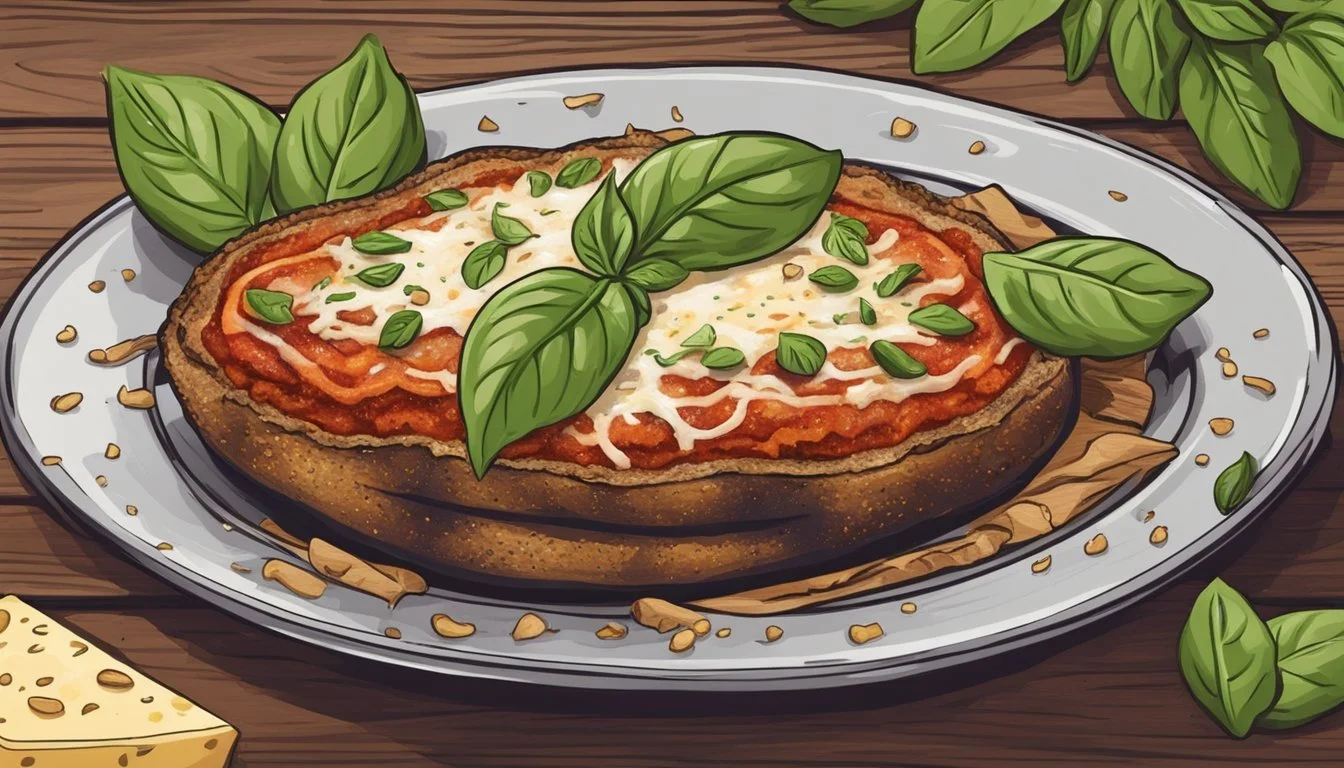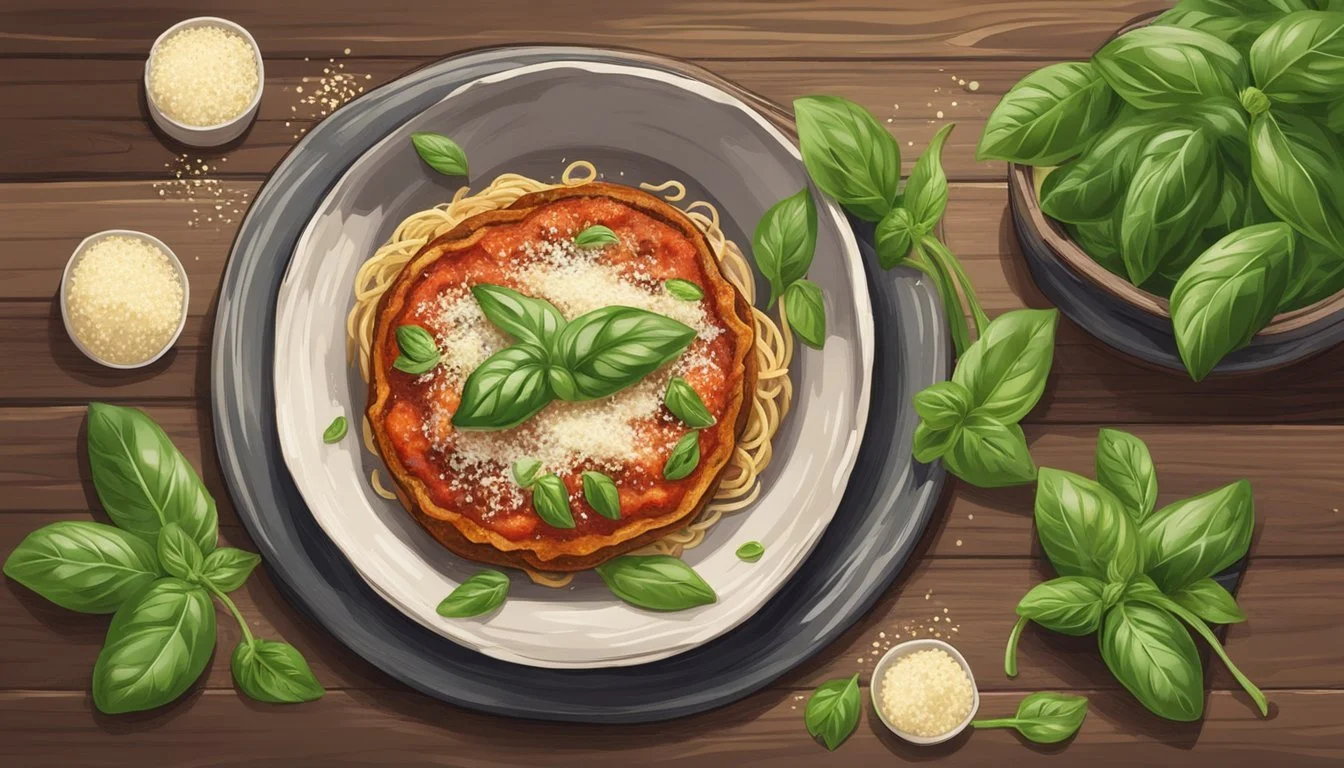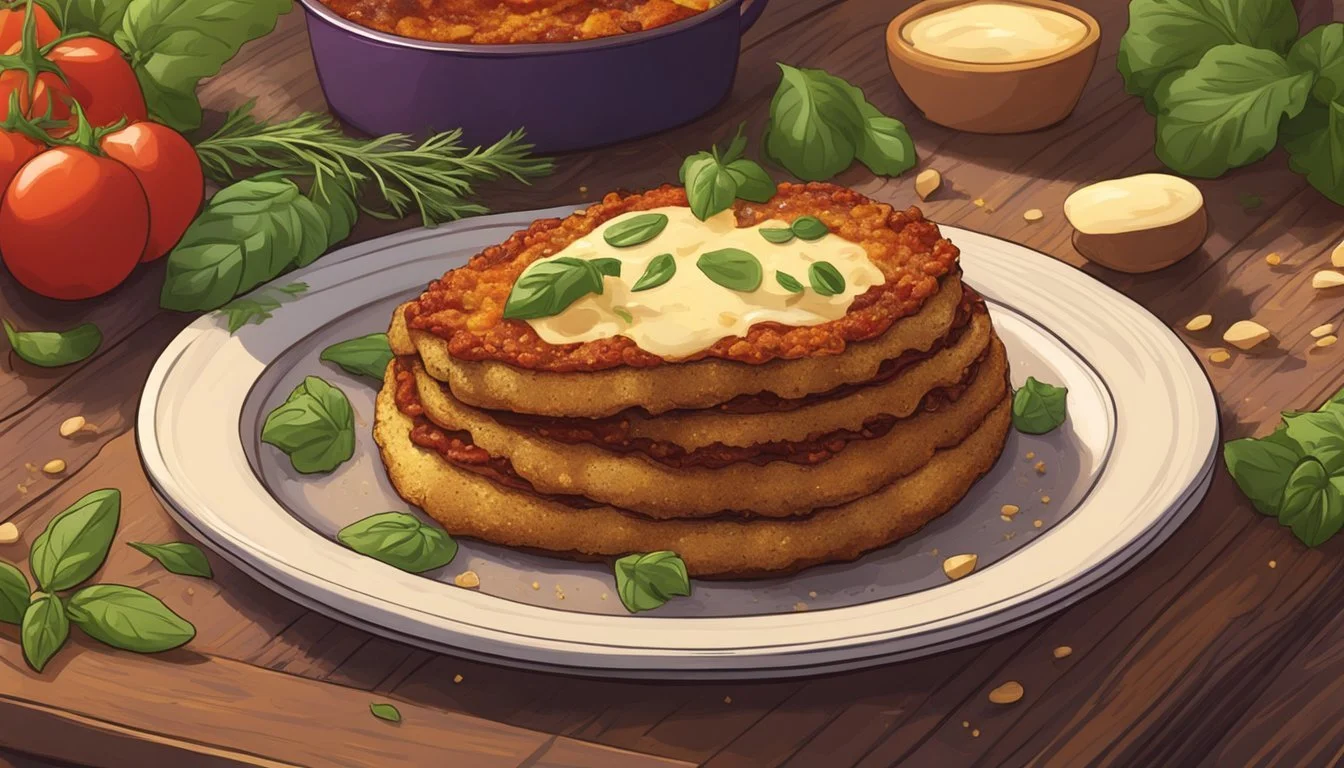How Long Does Gluten-Free Eggplant Parmesan Last?
Storage Tips and Guidelines
When properly stored, gluten-free eggplant parmesan can last in the refrigerator for 3 to 5 days. This beloved Italian dish, known for its layers of tender eggplant, rich tomato sauce, and melted cheese, remains a favorite for many both due to its satisfying flavors and its gluten-free appeal.
For those looking to extend its shelf life, freezing is a viable option. When frozen, gluten-free eggplant parmesan can maintain its quality for up to 2 months. It's crucial to store it in airtight containers or heavy-duty freezer bags to prevent freezer burn and preserve the dish's flavors and textures.
Whether you're preparing a batch ahead of time or storing leftovers, knowing how long gluten-free eggplant parmesan lasts can help you plan your meals better. Proper storage ensures you enjoy every bite without compromising on taste or safety.
Ingredients and Preparation
The key to a delicious gluten-free eggplant Parmesan lies in choosing quality ingredients and carefully preparing each component of the dish.
Selecting Quality Ingredients
The foundation of a great eggplant Parmesan starts with fresh, firm eggplants. Look for eggplants that are heavy for their size with shiny, smooth skin. Avoid any with wrinkled skin or soft spots, as these may indicate overripe or spoiled produce.
For a gluten-free version, breadcrumbs need to be substituted with gluten-free breadcrumbs. Other ingredients include salt, olive oil, garlic, marinara sauce, mozzarella cheese, parmesan cheese, fresh basil and, if needed, gluten-free flour.
Preparation of Eggplant
Start by slicing the eggplant into even rounds, about 1/4 inch thick. Lay the eggplant slices on a baking sheet and sprinkle both sides with salt. This step extracts excess moisture and reduces bitterness. Let them sit for around 30 minutes.
Rinse the salt off and pat the eggplants dry using a paper towel. Coat the slices in gluten-free flour, then dip in beaten eggs, and finally dredge in gluten-free breadcrumbs mixed with a bit of grated parmesan and Italian seasoning.
Assembling the Dish
Preheat the oven to 375°F (190°C). Lightly fry the coated eggplant slices in olive oil until golden brown, or alternatively, bake them to reduce oil usage. In a baking dish, spread a layer of marinara sauce. Arrange the cooked eggplants in a single layer atop the sauce.
Top with more marinara sauce, mozzarella cheese, and grated parmesan. Repeat layers until all ingredients are used, ending with a generous layer of cheese. Bake for about 25-30 minutes, until the cheese has melted and the sauce is bubbly.
Garnish with fresh basil before serving.
Cooking Process
Properly preparing gluten-free eggplant parmesan involves careful breading and baking to achieve a crispy texture, followed by layering and finalizing to ensure a cohesive dish with balanced flavors.
Breading and Baking
Begin by slicing the eggplant into rounds, typically ¼ to ½ inch thick. Leave the skin on for added texture and nutrients. Preheat the oven to 375ºF to 425ºF, depending on your recipe.
Set up three bowls for the breading process. The first bowl contains a mixture of flour, cornstarch, and salt. The second bowl has beaten eggs. The third bowl combines gluten-free breadcrumbs with parmesan cheese and oregano.
Dip each slice of eggplant into the flour mixture first, then coat it in the beaten eggs, and finish by covering it with the breadcrumb mix. Place the breaded slices on a baking sheet lined with parchment paper, ensuring there's space between each piece to prevent sticking.
Bake the eggplant slices until they are golden brown and crispy, which usually takes around 20 minutes. Flip them halfway through cooking to ensure both sides are evenly browned.
Layering and Finalizing
Once the eggplant slices are baked, layer them in a baking dish. Start with a base layer of marinara sauce to prevent sticking. Arrange a single layer of the baked eggplant slices over the sauce.
Add another layer of marinara sauce over the eggplant, followed by a generous sprinkling of mozzarella and parmesan cheese. Repeat the layering process until all ingredients are used, finishing with a top layer of cheese for a tempting, golden crust.
Bake at 375ºF for about 20-25 minutes until the cheese is melted and bubbly. Allow the dish to rest for a few minutes before serving for easier slicing and optimal flavor.
Serving and Presentation
When serving gluten-free eggplant parmesan, consider the aesthetics, suggestions for accompaniments, and the ideal garnishes. This will ensure the dish is both visually appealing and delicious.
Plating Eggplant Parmesan
Use a casserole dish to serve eggplant parmesan. Layer the slices neatly in the dish to showcase the gooey layers of shredded mozzarella and sauce.
For individual servings, cut into equal portions and place each on a contrasting plate. Selecting warm-toned plates enhances the dish's inviting appearance.
Serving Suggestions
Eggplant parmesan pairs well as a main course with side dishes like a fresh green salad, gluten-free garlic bread, or quinoa.
Offer al dente gluten-free pasta on the side. Ensure portions cater to your guests, usually about one to two slices per person.
Serve immediately to enjoy the hot, melted cheese.
Garnishing Tips
Garnish with fresh basil, as its bright green color adds a refreshing touch. Sprinkle finely chopped herbs like parsley or oregano for added flavor.
Grated Parmesan cheese can be added just before serving to enhance the presentation. A drizzle of olive oil on top provides a glossy finish.
These small touches elevate the dish from homemade to gourmet.
Storage and Shelf Life
Proper storage can significantly extend the life of gluten-free eggplant parmesan. Both refrigeration and freezing are effective methods to maintain its quality and freshness.
Refrigerating Leftovers
Leftover gluten-free eggplant parmesan should be stored in an airtight container to prevent exposure to excess moisture and air, which can lead to spoilage.
Once cooled to room temperature, place the dish in the refrigerator at 40°F or lower. Properly refrigerated, it can last for three to five days while retaining its taste and texture.
For optimal quality, try to consume the leftovers within this time frame. Before serving again, reheat the desired portion to an internal temperature of 165°F to ensure it is thoroughly warmed and safe to eat.
Important tips:
Avoid keeping the dish at room temperature for over two hours.
Label and date containers to monitor freshness.
Freezing for Long-Term Storage
When freezing gluten-free eggplant parmesan, use containers or aluminum foil to ensure it remains airtight and protected from freezer burn.
Cut the dish into serving-sized portions, which makes it convenient to thaw and reheat only what is needed. Ensure each portion is cooled completely before wrapping. Then, store the wrapped portions flat in the freezer at 0°F or lower.
Frozen eggplant parmesan can maintain its quality for up to three months. To reheat, thaw in the refrigerator overnight and bake at 350°F until it reaches an internal temperature of 165°F. For best results, avoid microwaving, as it can yield a mushy texture.
Nutritional Information
Gluten-free eggplant parmesan can be a nutritious addition to your diet.
Calories: A serving typically contains around 300-400 calories, depending on ingredients and portion size.
Macronutrients:
Protein: Approximately 10-15 grams per serving.
Carbohydrates: Can range from 30-40 grams.
Fats: Around 15-20 grams, including healthy fats from olive oil and cheese.
Fiber: Eggplants are rich in fiber. A serving provides about 4-5 grams, aiding digestion and promoting satiety.
Iron: This dish can contribute to your daily iron intake. Expect to get approximately 1.5-2 milligrams per serving.
Micronutrients:
Calcium: Includes calcium from cheese, often contributing to 20-25% of the daily requirement.
Vitamin A: Present in moderate amounts, benefiting eye health.
Vitamin C: Offers a small boost, aiding in immune function.
Healthier Variations: Using whole-grain or low-carb breadcrumbs can increase fiber content. Opting for low-fat cheese can reduce calorie and fat intake.
A clear list of nutrients helps track dietary goals.
Alternative Cooking Methods
Adapting gluten-free eggplant Parmesan can be done using an air fryer or stove, ensuring delicious results while catering to different kitchen tools and preferences. Each method maintains the crispy texture and rich flavor without compromising the dish's integrity.
Air Fryer Adaptation
Using an air fryer for gluten-free eggplant Parmesan provides a healthier option with less oil. Start by preheating the air fryer to 375 degrees Fahrenheit. Prepare the eggplant slices by dipping them in a mixture of almond milk and cornstarch, followed by a coating of gluten-free panko bread crumbs mixed with vegan Parmesan cheese.
Place the breaded eggplant slices in the air fryer basket, ensuring they are not stacked. Use cooking spray to lightly coat the top. Cook for 15-20 minutes, flipping halfway through, until golden and crispy. This method reduces the need for extensive oil frying, maintaining the crunch while cutting down on calories.
Stovetop Variation
For a stovetop variation, bread the eggplant slices by dipping them in flour, followed by beaten eggs, and finally a gluten-free breadcrumb and Parmesan mixture. Preheat a large skillet over medium heat and add enough olive oil to cover the bottom.
Cook the eggplant slices in batches, making sure not to overcrowd the skillet. Fry each slice for about 3-4 minutes on each side until golden brown and crispy. Transfer cooked slices to a paper towel-lined plate to drain excess oil. This method delivers a crispy exterior with a rich, savory flavor, akin to traditional frying techniques.
Variations and Substitutes
There are several ways to adapt eggplant Parmesan for dietary restrictions or simply to introduce new flavors. Below, explore gluten-free adjustments and dairy-free alternatives in detail.
Gluten-Free Adjustments
For those needing a gluten-free version, traditional bread crumbs can be substituted with gluten-free bread crumbs, cornmeal, or even ground almonds. Some recipes also use a combination of gluten-free flour and cornstarch for breading.
For an ultra-crispy texture, gluten-free panko bread crumbs are highly recommended. Marinara sauce and grated Parmesan cheese remain the same, ensuring the dish retains its authentic taste. Be sure all ingredients certified gluten-free to avoid cross-contamination.
Dairy-Free Alternatives
To make the dish dairy-free, substitute mozzarella and Parmesan cheeses with vegan cheese varieties. Options include almond-based or cashew-based cheeses.
To replicate the creamy texture without dairy, nutritional yeast flakes can provide a cheesy flavor. Another alternative is to use a combination of dairy-free mozzarella and a homemade cashew cream sauce. Ensure marinara sauce is dairy-free and watch for hidden dairy in breading mixes.
In both cases, these adjustments and substitutes enable those with dietary restrictions to enjoy eggplant Parmesan without compromising on flavor or texture. For a twist, incorporating zucchini instead of eggplant can provide a new taste while staying gluten-free and/or dairy-free.
Additional Tips and Tricks
Mastering gluten-free eggplant parmesan involves specific steps to achieve the perfect texture and properly preparing the eggplants to avoid bitterness.
Achieving the Perfect Texture
Crispy, well-textured eggplant parmesan requires attention to each breading layer and baking step.
1. Breading Process: Use a mixture of gluten-free flour, cornstarch, and seasonings. Ensure slices are fully coated with the dry ingredients.
2. Crunchy Coating: Combine gluten-free panko breadcrumbs, cornmeal, and parmesan cheese. The inclusion of cornstarch enhances the crispness.
3. Baking Temperature: Preheat the oven to 400°F. A high temperature helps in achieving a golden-brown crust.
4. Baking Sheet Setup: Line with parchment paper to prevent sticking and ensure even cooking.
These steps guarantee a crisp exterior, which contrasts beautifully with the tender interior of the eggplant slices.
Cutting and Salting Eggplants
Proper preparation of eggplants is crucial in creating a dish that’s not overly bitter or soggy.
1. Slicing Thickness: Slice eggplants into ¼ to ½ inch rounds. This thickness balances cooking time and texture.
2. Smaller Eggplants: Use smaller, firm eggplants without blemishes or soft spots to ensure freshness and flavor.
3. Salting Process: Place sliced eggplants on paper towels. Sprinkle both sides with salt and let them sit for about 30 minutes. This process draws out excess moisture and bitterness.
4. Draining and Pat Dry: After salting, pat the eggplants dry with paper towels to remove the released moisture and excess salt.
Salting ensures the eggplants achieve the desired texture and flavor, reducing prep and total time by preventing additional seasoning or moisture adjustment steps.
Closing Thoughts
Gluten-free eggplant parmesan, a beloved Italian dish, offers a delightful vegetarian option. It's important to ensure the dish stays fresh and enjoyable.
Storage: Once prepared, it's best to store the eggplant parmesan in an airtight container. Refrigeration is necessary to keep it safe to eat.
Refrigerated Shelf Life: Typically, gluten-free eggplant parmesan lasts 3 to 5 days in the refrigerator.
Freezing: For longer preservation, freezing is an option. The dish should be frozen in individual portions for convenience.
Frozen Shelf Life: When properly stored in the freezer, it can last up to 2 months.
Reheating: To retain the texture and flavor, reheat in an oven rather than a microwave.
The gluten-free nature ensures that even those with gluten sensitivities can enjoy this classic casserole. Proper storage and handling will ensure the dish remains delicious and safe to consume.
Tip: Always label containers with the date to track freshness.
By following these guidelines, the enjoyment of gluten-free eggplant parmesan can extend well beyond the initial meal.

